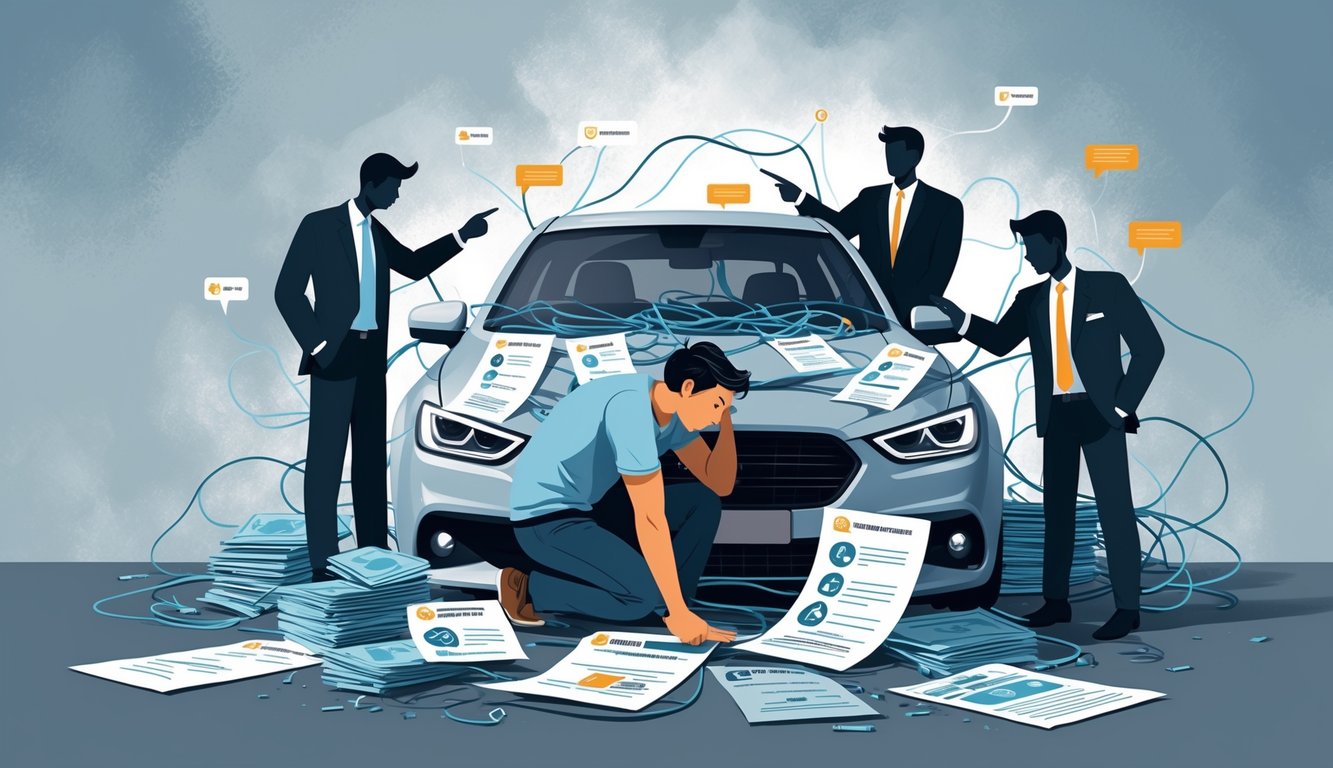
The Impact of Higher Deductibles
Everyone wants to save on monthly premiums, but nobody talks about how a “high deductible” actually feels when disaster hits. The risk just rockets up, and half the time, you don’t even notice what changed until the next renewal rolls in.
Balancing Lower Premiums With Financial Risk
I’ve watched people pick $1,000 deductibles like it’s a win—they light up at the $30 or $40 monthly savings. Looks good, but that’s just marketing. Insurance data (Insurance Information Institute, 2023) says bumping your deductible from $200 to $500 can cut premiums by up to 30%. Sounds great, but who’s got that kind of cash lying around for emergencies? Most people don’t even have $500 spare, let alone $1,000.
Had a client once, always said, “I never use my insurance.” Then a rogue shopping cart hit her car—bam, $1,500 repair, and insurance only helped after she paid the first grand. Suddenly, nobody’s smiling. The trick isn’t the lowest premium, it’s whether you can actually pay the deductible when it matters.
High deductibles feel like forced savings, but what are you saving for? Theoretical price drops? When reality hits, it’s just a big, ugly bill. Do you have that money set aside, or are you just gambling?
When a High Deductible Hurts More Than It Helps
People love to say “I’m saving money,” but when premiums go up anyway, what’s the point? Insiders admit—high deductibles don’t always stop those hikes. And if you can’t pay that deductible all at once, forget budgeting, it’s just a panic button. The IRS says $1,400+ is “high” for health plans, but for auto? There’s no ceiling.
I’ve seen people in tears because their “savings” disappeared the second they filed a claim. Then, when premiums rise again, they get hit twice: high payments, high deductible, zero relief. Nobody warns you that insurers recalculate your risk, so even careful drivers get dinged.
Worst part? You end up self-insured without real benefits. One accident, and you’ve lost every dollar you “saved.” If you’d just put that money in a jar, maybe it’d hurt less. Nobody teaches risk management in school; they just hand you a glossy pamphlet and cross their fingers.
How Deductibles Affect Repair Costs
Every time I actually look at my insurance, it’s the deductible that trips me up. The numbers look fine until you need them, and then I’ve seen coworkers just stare at their bills, realizing their “cheap” plan just dumped a pile of costs in their lap. Deductibles seem like a good idea for lower monthly payments—at least, that’s what the sites scream—but when it comes to real repair bills, it’s never just luck. It’s more like a slow-motion train wreck you only notice after it hits.
Unexpected Out-of-Pocket Expenses
Okay, but really, who decided car insurance should feel like a rigged carnival game? Every time something happens to my Honda Civic, I’m half-convinced the system’s just trolling me. I mean, if I had a buck for every friend who hit their deductible and still got stuck with surprise bills, I’d probably just blow it on gas and coffee. Raising your deductible? Supposedly, it makes your premium drop (all those online calculators love their little charts), but nobody warns you about that gut-punch moment after an accident when you realize, oh, right, I owe $1,000 before the insurer even blinks.
I fell for the high-deductible “hack” once. Felt clever until a $1,200 bumper bill landed in my lap, and—surprise!—I was out $1,000. Bankrate mentions it, State Farm adjusters kind of mumble it, but most people only figure it out while sweating at the mechanic. The premium savings? Eh, a couple hundred a year if you’re lucky, but then you see expert warnings: just a few claims in five years and you’ve lost money compared to the low-deductible folks (the National Association of Insurance Commissioners tracks this stuff, and honestly, their spreadsheets are a snooze). And everyone swears they’re a “safe driver,” but come on—hail, theft, some idiot with a shopping cart, and suddenly you’re in the same trap.
Real-World Repair Scenarios
Here’s what actually freaks me out: claims math is never as easy as you hope. Last April, my neighbor’s Mazda got rear-ended. The repair estimate? $2,300. Her deductible? $500. She bragged about her “savings” until she had to cough up $500 before insurance did anything. And these “minor” accidents? The Insurance Information Institute says the average fender bender runs $1,200, which means you’re constantly in this weird limbo—do I even bother filing a claim?
Sometimes, the insurer just shrugs and says, “Sorry, your bill’s under the deductible,” so you pay every penny. And comprehensive claims? Don’t even. Hail cracks your windshield for $800, but if you picked a $1,000 deductible, why even call the insurer? GEICO’s survey found only 45% of drivers could explain their deductible, and honestly, I believe it. The confusion at repair shops is almost funny. And those high-deductible plans in the shiny ads? Not a word about this stuff in the brochure.
